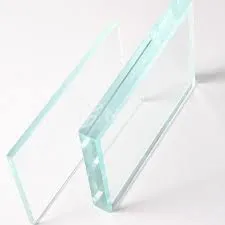Understanding Glass Tempering Meaning, Process, and Benefits
Glass has become an essential part of modern architecture, design, and everyday utility. Among the various types of glass available, tempered glass stands out due to its strength and safety features. Understanding the term glass tempered provides insight into its significance in various applications, particularly in construction, automotive, and interior design.
What is Tempered Glass?
Tempered glass, also known as toughened glass, is a type of safety glass that has been treated to increase its strength compared to normal glass. This process involves heating the glass to high temperatures, typically around 620 degrees Celsius (or about 1,150 degrees Fahrenheit), and then cooling it rapidly. This procedure alters the internal structure of the glass, resulting in a product that is significantly stronger and more resistant to thermal stress and mechanical impact.
The main distinguishing factor of tempered glass is its ability to shatter into small, blunt pieces rather than sharp shards when it breaks. This feature makes it safer for use in various environments, reducing the risk of injury from accidents.
The Process of Tempering Glass
The tempering process involves several key steps
1. Cutting and Shaping The glass is first cut to the desired size and shape. This step is crucial because, once the glass is tempered, it cannot be altered without risking breakage.
2. Heating The glass is then heated in a furnace to reach its transformation temperature. This ensures that the entire piece of glass achieves uniform heating.
3. Quenching After reaching the designated temperature, the glass is rapidly cooled by blowing cold air on its surface. This cooling process creates compressive stresses on the surface of the glass while maintaining tensile stress inside, enhancing its overall strength.
4. Inspection After tempering, the glass is inspected for any imperfections, ensuring that it meets safety and quality standards.
Through this meticulous process, tempered glass gains its characteristic properties, including higher resistance to impact and a significant ability to withstand temperature fluctuations.
glass tempered meaning
Applications of Tempered Glass
Tempered glass is widely used in various applications due to its strength and safety features. Some common uses include
- Building and Construction In modern buildings, tempered glass is often utilized in facades, windows, and doors. It can endure high winds, impacts, and varying temperatures, making it an ideal choice for commercial and residential properties.
- Automotive Industry In cars, tempered glass is used for side and rear windows. Given its strength, it enhances vehicle safety and minimizes the risk of injury during accidents.
- Shower Doors and Partitions Tempered glass is a popular choice for bathroom fixtures, be it shower enclosures or glass partitions. Its ability to resist breaking and shattering makes it a preferred option in wet environments.
- Furniture Design In interior design, tempered glass is frequently used for tabletops, shelves, and decorative pieces due to its aesthetic appeal and durability.
Benefits of Glass Tempering
The benefits of tempered glass are numerous. Firstly, its increased strength helps to resist breaking due to blunt force, making it a safer option. Secondly, its thermal resistance allows it to tolerate significant temperature changes, preventing thermal shock and breakage. This is particularly important in environments that experience sudden shifts in temperature, such as restaurants with hot dishes and cold air conditioning.
Additionally, using tempered glass offers aesthetic advantages; it can be produced in various finishes and can be customized to fit different design themes. It also adds an element of sophistication to any space while providing practical benefits.
Conclusion
In conclusion, understanding the meaning of “glass tempered” reveals its importance in modern society. The tempering process not only enhances the strength and safety of glass but also expands its decorative and functional applications. As technology and design continue to evolve, tempered glass will remain a vital material in the construction and design industries, ensuring safety without compromising on aesthetics or functionality. Whether in residential buildings, automobiles, or stylish furniture, tempered glass truly exemplifies the intersection of safety and beauty in our everyday lives.
 Afrikaans
Afrikaans  Albanian
Albanian  Amharic
Amharic  Arabic
Arabic  Armenian
Armenian  Azerbaijani
Azerbaijani  Basque
Basque  Belarusian
Belarusian  Bengali
Bengali  Bosnian
Bosnian  Bulgarian
Bulgarian  Catalan
Catalan  Cebuano
Cebuano  Corsican
Corsican  Croatian
Croatian  Czech
Czech  Danish
Danish  Dutch
Dutch  English
English  Esperanto
Esperanto  Estonian
Estonian  Finnish
Finnish  French
French  Frisian
Frisian  Galician
Galician  Georgian
Georgian  German
German  Greek
Greek  Gujarati
Gujarati  Haitian Creole
Haitian Creole  hausa
hausa  hawaiian
hawaiian  Hebrew
Hebrew  Hindi
Hindi  Miao
Miao  Hungarian
Hungarian  Icelandic
Icelandic  igbo
igbo  Indonesian
Indonesian  irish
irish  Italian
Italian  Japanese
Japanese  Javanese
Javanese  Kannada
Kannada  kazakh
kazakh  Khmer
Khmer  Rwandese
Rwandese  Korean
Korean  Kurdish
Kurdish  Kyrgyz
Kyrgyz  Lao
Lao  Latin
Latin  Latvian
Latvian  Lithuanian
Lithuanian  Luxembourgish
Luxembourgish  Macedonian
Macedonian  Malgashi
Malgashi  Malay
Malay  Malayalam
Malayalam  Maltese
Maltese  Maori
Maori  Marathi
Marathi  Mongolian
Mongolian  Myanmar
Myanmar  Nepali
Nepali  Norwegian
Norwegian  Norwegian
Norwegian  Occitan
Occitan  Pashto
Pashto  Persian
Persian  Polish
Polish  Portuguese
Portuguese  Punjabi
Punjabi  Romanian
Romanian  Russian
Russian  Samoan
Samoan  Scottish Gaelic
Scottish Gaelic  Serbian
Serbian  Sesotho
Sesotho  Shona
Shona  Sindhi
Sindhi  Sinhala
Sinhala  Slovak
Slovak  Slovenian
Slovenian  Somali
Somali  Spanish
Spanish  Sundanese
Sundanese  Swahili
Swahili  Swedish
Swedish  Tagalog
Tagalog  Tajik
Tajik  Tamil
Tamil  Tatar
Tatar  Telugu
Telugu  Thai
Thai  Turkish
Turkish  Turkmen
Turkmen  Ukrainian
Ukrainian  Urdu
Urdu  Uighur
Uighur  Uzbek
Uzbek  Vietnamese
Vietnamese  Welsh
Welsh  Bantu
Bantu  Yiddish
Yiddish  Yoruba
Yoruba  Zulu
Zulu 

